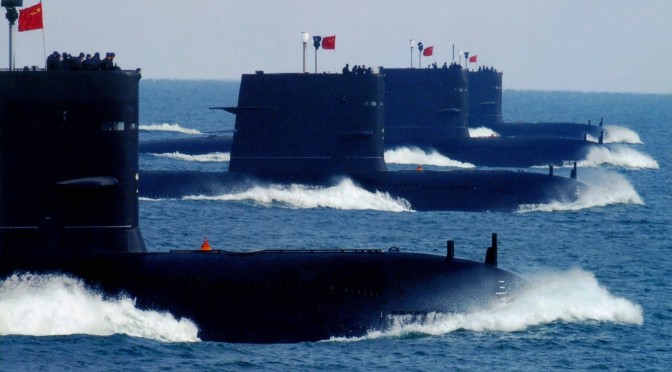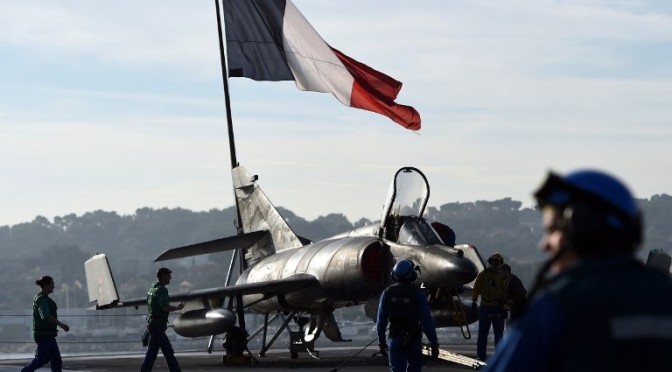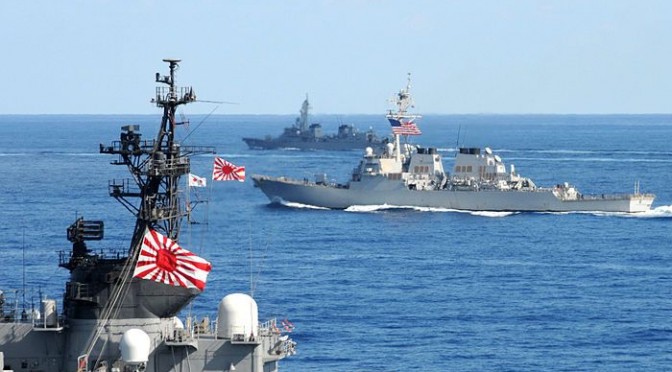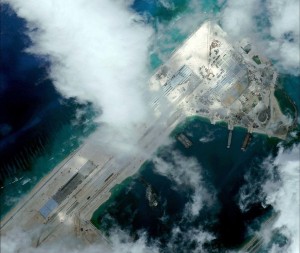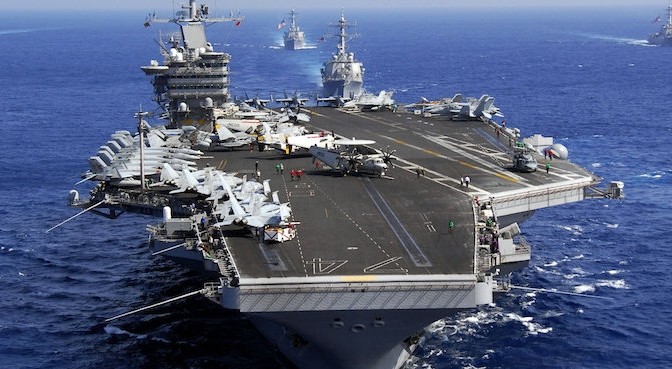Welcome to the December 2015 Member Round-Up and happy holidays! CIMSEC members have examined an array of international maritime security issues, including the future of China’s aircraft carrier program, budgetary cuts to the U.S. Littoral Combat Ship (LCS) acquisition process, Russian naval capabilities in the post-Cold War period and the decline of British sea power.
Beginning the Round Up at The National Interest, Harry Kazianis discusses the primary features driving the development of China’s aircraft carrier program and the operational capacities the program will yield for the PLA-N. Mr. Kazianis explains that the continued expansion of the program and the inclusion of carriers in China’s maritime defense policy have reflected Beijing’s grand strategic vision of Chinese seapower expanding into the Asia-Pacific and eventually attaining global power-projection capabilities. Also at The National Interest, Mr. Kazianis discusses China’s expanding anti-ship ballistic missile (ASBM) programs and the implications the DF-26’s nuclear and conventional attack capabilities have on regional influence and nuclear deterrence. Further to this, he explains how the multi-use DF-26 ASBM has been upgraded with anti-identification, anti-interception and integrated technologies to enhance the missile’s ability to conduct successful offensive and defensive operations.
[otw_shortcode_button href=”https://cimsec.org/buying-cimsec-war-bonds/18115″ size=”medium” icon_position=”right” shape=”round” color_class=”otw-blue”]Donate to CIMSEC![/otw_shortcode_button]
Ankit Panda, for The Diplomat, identifies the costs and benefits of an accidental freedom of navigation operation (FONOP) in the South China Sea where a U.S. B-52 unintentionally flew within 12 nautical miles of the Chinese claimed Spratly Islands. Mr. Panda explains that although the flyby slightly increased tensions in the region, the incident reduced some ambiguity concerning how China would respond both politically and militarily to a U.S. FONOP or U.S. military provocation near disputed Chinese maritime territory. In a separate article also at The Diplomat, Mr. Panda discusses the deployment of Japanese ground forces to the East China Sea near the disputed Senkaku/ Diaoyu Islands largely to promote jurisdictional control over the Islands. The increased ground force presence will enhance Japanese intelligence, surveillance and reconnaissance capabilities near the Senkaku/ Diaoyu Island chain while reducing Chinese operational capacity in the region.
Michal Thim, for Thinking Taiwan, discusses the strategic importance for the Taiwanese Navy to procure an improved submarine force capable of protecting the country’s maritime interests in the Taiwan Strait and resist an increasingly powerful PLA-N. Mr. Thim notes that a lack of domestic shipbuilding experience concerning the construction and design of submarines challenges the possibility of Taiwan’s future undersea operations being capable of surviving an environment with increased Chinese ASW capabilities. The article highlights the effectiveness of Argentinian submarines against the powerful British Navy in the 1982 Falkland’s War to demonstrate how Taiwan can use a capable submarine force as an asymmetrical weapon system to balance naval power in the region.
James Goldrick, at The Interpreter, analyzes components of China’s maritime strategy in an attempt to identify whether Beijing will use its maritime forces to secure and promote global sea lines of communication systems as opposed to developing a strategy focused on securing resources and denying foreign powers influence in the region. Mr. Goldrick suggests that China’s dependence on international maritime trade flow requires the U.S. to acknowledge the usefulness and logical increase in the PLA-N’s size and capabilities while China must use these capabilities as a means to endorse maritime security in support of the global system.
Concluding the Round-Up’s discussion on Chinese maritime developments in the Asia-Pacific, Kyle Mizokami for Popular Mechanics discusses China’s acquisition of the Russian Zubr class hovercraft and explains the procurement of these amphibious systems as a result of the several island-based territorial disputes in the East China Sea and South China Sea. Mr. Mizokami outlines the technicalities of the Zubr hovercraft such as the carrying capacity of the ship, onboard weapon systems and maneuverability to highlight the increased amphibious capabilities the PLA-N has acquired.
Patrick Truffer, at Offiziere, concludes the December Round-Up with a comprehensive analysis on the development of Russian naval capabilities after the collapse of the Soviet Union and explains how the Russian Federation Navy (RFN) has shifted its focus from the quality and quantity of its conventional forces to the long-term capacity of its strategic forces. Mr. Truffer explains that the RFN has sufficiently maintained the maritime component of the military’s nuclear triad with substantial upgrade investments in the nuclear-powered Borei-class submarine allowing for the older Delta- and Typhoon-class submarines to be replaced.
Members at CIMSEC were also active elsewhere during the month of December:
- Bryan Clark, for The Center for Strategic and Budgetary Assessments (CSBA), discusses the difficulties the U.S. Navy will face in 2017 with security obligations and demands at sea exceeding its ability to supply sufficient forces. Mr. Clark highlights the likelihood of the fiscal 2017 budget prioritizing a high quality fleet as opposed to one with an adequate quantity of forces.
- Chuck Hill, for his Coast Guard Blog, outlines the Finnish Navy’s procurement objectives concerning its ‘Squadron 2020’ project. Mr. Hill notes that the Offshore Patrol Cutter (OPC) is similar to the desired Finnish ship, although the final ship acquired will likely be smaller and support more weapon systems than equivalent U.S. Navy or Coast Guard vessels. In a second article, Mr. Hill explains the development of a European Coast Guard, including planned budgets and responsibilities. The article explains how this Coast Guard will resemble a maritime component of the European Border Supervisory Agency and rely heavily on member state navies.
- Paul Pryce, for Offiziere, discusses Montenegro’s invitation to join the North Atlantic Treaty Organization (NATO), particularly weighing both the objectives and strength of NATO in a period where the alliance faces conflict in Ukraine and Syria and whether these issues reflect the national interests of Montenegro.
- At The National Interest, Dave Majumdar examines China’s recent war games operation in disputed regions of the South China Sea where destroyers, submarines, early warning aircraft and fighter aircraft conducted military exercises requiring high levels of coordination among air, sea and land-based forces. Mr. Majumdar explains how these war game exercises demonstrate China’s increasingly effective battlefield networks necessary for the development of PLA-N capabilities in high-end conflict scenarios. In a second article at The National Interest, Mr. Majumdar discusses U.S. Secretary of Defense Ashton Carter’s decision to reallocate resources initially intended for the LCS program but now being directed towards more aircraft and additional destroyers.
- Alex Calvo, for The China Policy Institute Blog, outlines the international arbitration case the Philippines has brought against China regarding the applicability of UNCLOS in the territorial disputes within the South China Sea. The article explains how the case has been interpreted as a victory for the Philippines and more generally how foreign aid – both financially and militarily – from Japan and Korea will continue to support Manila to uphold the court’s rulings.
At CIMSEC we encourage members to continue writing, either here on the NextWar site or through other means. You can assist us by emailing your works to dmp@cimsec.org.
Sam Cohen is currently studying Honors Specialization Political Science at Western University in Canada. His interests are in the fields of strategic studies and defense policy and management.
[otw_shortcode_button href=”https://cimsec.org/buying-cimsec-war-bonds/18115″ size=”medium” icon_position=”right” shape=”round” color_class=”otw-blue”]Donate to CIMSEC![/otw_shortcode_button]

